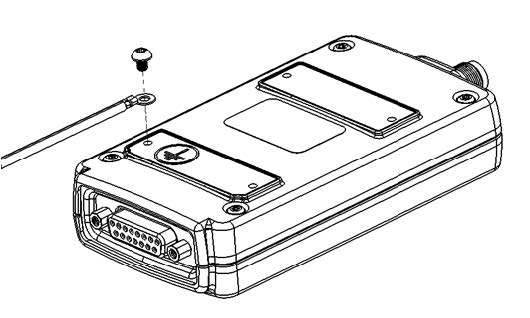Installing the radio
The TDL510 radio has four fixing screw positions on its back side of the housing, which can be used to attach the radio to a structure or to accomplish a grounding connection.

Installation requirements
Electronic devices are sensitive to external influences, which should be taken into consideration while taking the device into operation. Proper place for assembling is necessary for good performance and long lifespan.
Even though the radio is built to withstand external vibrations, shocks, temperature fluctuations, and high/low temperatures, these occurrences should be avoided as much as possible to maximize the durability and longevity of the product. High temperature decreases the lifespan of the components. Vibration and shocks weaken the mechanical structure and can drastically affect the performance in use.
The radio is not meant for direct outdoor use. Ensure that you avoid moisture or high humidity conditions. It is preferable to use only indoors or outside inside of proper isolation against harsh weather conditions.
Grounding using the housing
The radio can be grounded directly using modem housing with its dedicated grounding point. Grounding point is marked to the housing with Ground – label. It is preferable to use the screw included with the shipment.

Grounding cable and screws
The grounding cable should be with >1 mm2 copper conductor with insulation, preferably green/yellow coded for easy ground recognition. The cable should be joined to the grounding connector by crimp connection (pictured). Grounding should be terminated to a grounding rail or other reliable grounding source with the shortest possible cable length to avoid ground loops and elevated resistances in cables. If longer cable is needed, cable thickness should be increased accordingly.
Two different screw types are included in the installation kit:
-
Screw type A is M3 countersunk screw and is used to attach the installation plate to the modem housing.
-
Screw type B is used for grounding connector attachment.
|
|
|
|
|
Grounding cable and connector |
Screw type A |
Screw type B |
Grounding the antenna
Grounding the antenna is recommended when the antenna is located outside on a mast or long pole where it is prone to lightning strikes or other high energy disturbances.
Grounding is best to locate as near as possible to the expected disturbance to occur, in practice at the point where the antenna is fixed to a structure. Wiring the antenna ground and/or cable shield should be done to a ground rail or other reliable common ground with the shortest possible cable length to avoid high-resistance ground loops. If grounding cable is needed to be longer, thicker cable should be used accordingly. Copper cable is preferred for highest conductivity. It is not recommended to use the mast only as a grounding conductor as its conductivity cannot always be guaranteed.



